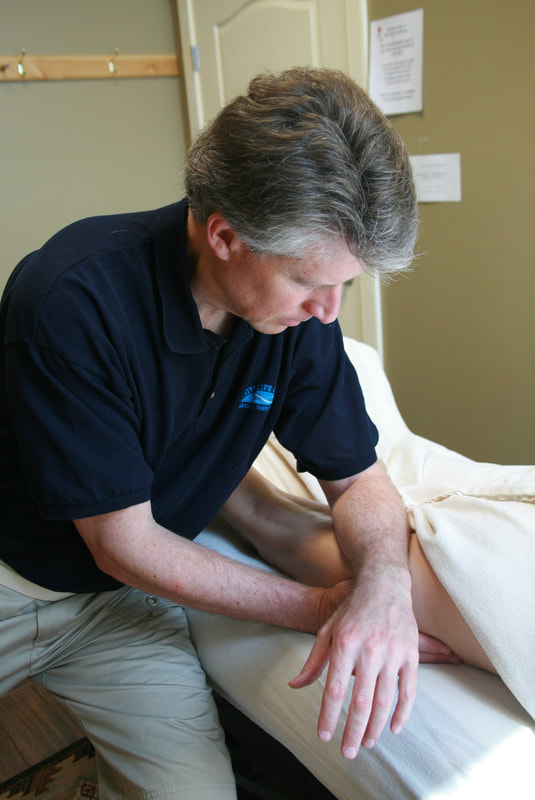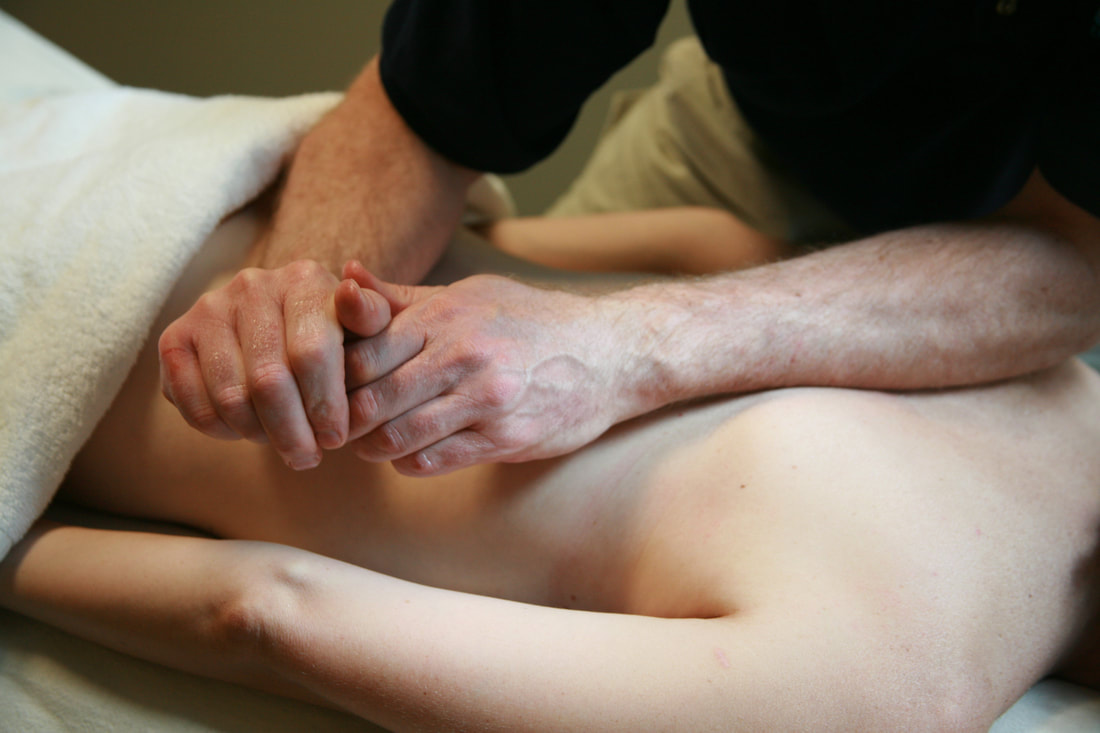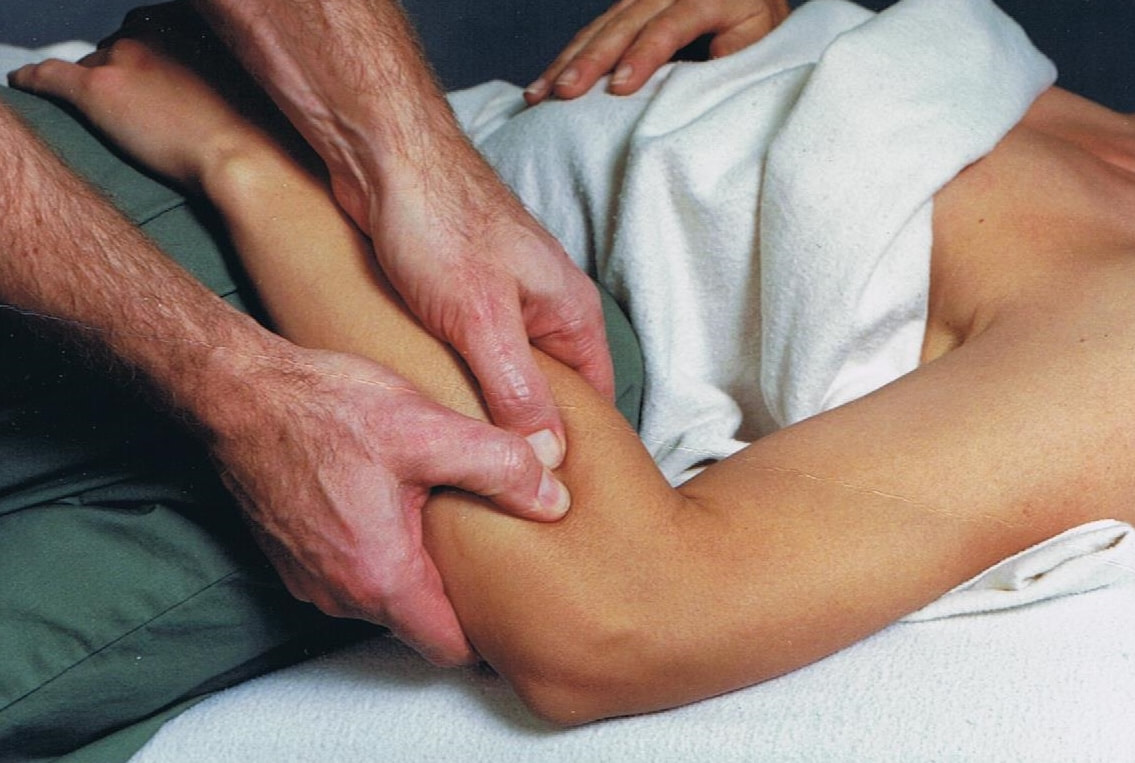Deep Tissue Massage
by Kip Petch, RMT
As its title clearly indicates, Deep Tissue Massage Therapy requires a therapist to administer a deeper amount of pressure to accomplish their therapeutic objectives. However, if done properly this approach should not cause excessive pain for the client, nor additional strain for the therapist. Working deeply does not equate with working harder, but is the result of utilizing specific Deep Tissue Massage techniques combined with their thorough knowledge of the different layers of the body’s soft tissues.
Certain portions of a treatment may feel uncomfortable at times, however our Massage Therapists will always respect your pain tolerance levels, and will work with you to find a level of pressure that is comfortable for you. In some cases this extra pressure may cause discomfort which will feel very different from one person to the next, so we encourage ongoing feedback with your therapist during your massage to ensure your expectations of pressure are being adequately addressed.
The focus of a Deep Tissue Massage Therapy is to realign the deeper layers of muscle and connective tissue which are usually the more chronically tense and contracted areas. It is often the deeper layers of muscle which are the offending and/or injured structures and the therapist has no option but to work more deeply through the superficial layers to create a therapeutic effect on that body region. This required increased depth of pressure could, of course, cause some additional discomfort.
When you regularly exercise or experience physical and/or emotional strain from your daily activities, your muscles may feel sore and fatigued. This may be due to the formation of adhesions as your muscles deteriorate from chronic overuse, repetitive strain or injury. Deep Tissue Massage can assist to soften these scar tissue layers and allow tense muscles to be more pliable and responsive.
Injury, illness or prolonged immobility can cause fascia to become stiff, hardened or stuck to adjacent structures. This in turn causes pain, reduced passive and active mobility and impaired function. Deep tissue massage techniques aim to stimulate oxygenated blood flow in your muscles, relieve inflammation, promote cell regeneration and break up old structural and biomechanical patterns.
Every massage should leave you feeling refreshed and rejuvenated, which a deep tissue session can certainly do. When you depend on having a full range of motion and adequate strength in your muscles, you need to give them time to heal. Support your muscle recovery with a regular Deep Tissue Massage, and you will notice a significant improvement in your physical performance and overall well-being!
Deep Tissue Massage Therapy is beneficial, and can be administered with care, in almost any region of the body, but it is most effective in the larger muscle groups of the legs, gluteals, back and arms.
Registered Massage Therapists at the Active Life Centre who include Deep Tissue Massage into their practices:
Kip Petch
Kerri Wagensveld
Becky Hobbs
Liesl van Jaarsveldt
Elena Fursova
Karolina Cimoch
As its title clearly indicates, Deep Tissue Massage Therapy requires a therapist to administer a deeper amount of pressure to accomplish their therapeutic objectives. However, if done properly this approach should not cause excessive pain for the client, nor additional strain for the therapist. Working deeply does not equate with working harder, but is the result of utilizing specific Deep Tissue Massage techniques combined with their thorough knowledge of the different layers of the body’s soft tissues.
Certain portions of a treatment may feel uncomfortable at times, however our Massage Therapists will always respect your pain tolerance levels, and will work with you to find a level of pressure that is comfortable for you. In some cases this extra pressure may cause discomfort which will feel very different from one person to the next, so we encourage ongoing feedback with your therapist during your massage to ensure your expectations of pressure are being adequately addressed.
The focus of a Deep Tissue Massage Therapy is to realign the deeper layers of muscle and connective tissue which are usually the more chronically tense and contracted areas. It is often the deeper layers of muscle which are the offending and/or injured structures and the therapist has no option but to work more deeply through the superficial layers to create a therapeutic effect on that body region. This required increased depth of pressure could, of course, cause some additional discomfort.
When you regularly exercise or experience physical and/or emotional strain from your daily activities, your muscles may feel sore and fatigued. This may be due to the formation of adhesions as your muscles deteriorate from chronic overuse, repetitive strain or injury. Deep Tissue Massage can assist to soften these scar tissue layers and allow tense muscles to be more pliable and responsive.
Injury, illness or prolonged immobility can cause fascia to become stiff, hardened or stuck to adjacent structures. This in turn causes pain, reduced passive and active mobility and impaired function. Deep tissue massage techniques aim to stimulate oxygenated blood flow in your muscles, relieve inflammation, promote cell regeneration and break up old structural and biomechanical patterns.
Every massage should leave you feeling refreshed and rejuvenated, which a deep tissue session can certainly do. When you depend on having a full range of motion and adequate strength in your muscles, you need to give them time to heal. Support your muscle recovery with a regular Deep Tissue Massage, and you will notice a significant improvement in your physical performance and overall well-being!
Deep Tissue Massage Therapy is beneficial, and can be administered with care, in almost any region of the body, but it is most effective in the larger muscle groups of the legs, gluteals, back and arms.
Registered Massage Therapists at the Active Life Centre who include Deep Tissue Massage into their practices:
Kip Petch
Kerri Wagensveld
Becky Hobbs
Liesl van Jaarsveldt
Elena Fursova
Karolina Cimoch


